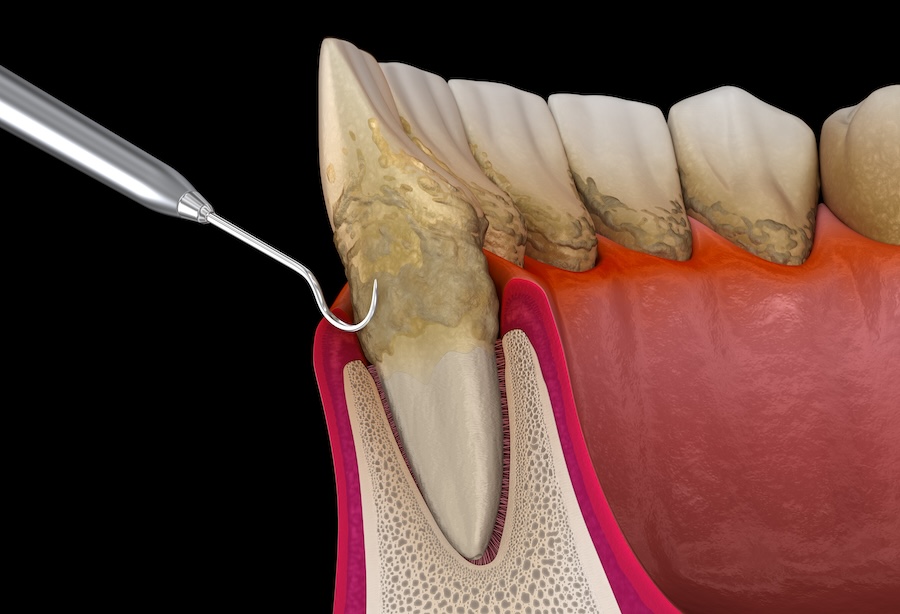
How Do Dentists Treat Gum Disease?
August 19, 2024 9:00 amGum disease is one of those sneaky dental issues that can start off almost unnoticed but can quickly escalate if not properly treated. If you’ve been told you have gum disease, you’re probably wondering what comes next. Dr. Marc Rasmussen at Imperial Christina Dental Care in Lakeland, FL, is here to explain the steps involved in treating gum disease and getting your oral health back on track.
What is Gum Disease?
Before we dive into the treatment options, it’s important to understand what gum disease is. Gum disease, also known as periodontal disease, is an infection of the tissues that surround and support your teeth. It typically starts with gingivitis, the early stage characterized by red, swollen gums that may bleed when you brush or floss. If left untreated, it can progress to periodontitis, a more severe form that can lead to tooth loss and even affect your overall health.
Step 1: Professional Cleaning
The first line of defense against gum disease is a deep cleaning, also known as scaling and root planing. During this non-surgical procedure, Dr. Rasmussen or a skilled dental hygienist will focus on reducing the bacterial load that’s contributing to inflammation in your gums. Here’s how it works:
Scaling:
The hygienist removes plaque and tartar (hardened plaque) from the surface of your teeth and below the gumline. This thorough cleaning targets the bacteria responsible for the inflammation, helping to calm your body’s immune response and reduce the risk of further periodontal destruction.
Reducing Inflammation:
The goal of this deep cleaning is not just to clean your teeth, but to reduce the bacteria that are causing your gums to become inflamed. Inflammation is your body’s immune response to infection, but chronic inflammation can lead to tissue and bone destruction. By reducing the bacterial load, we help to reduce inflammation and allow your gums to start healing.
Step 2: Medications
In some cases, Dr. Rasmussen may prescribe medication to help control the infection and manage inflammation. These can include:
Antibiotic Mouthwash: A prescription mouthwash can help reduce bacteria and prevent the progression of gum disease.
Topical Antibiotics: Applied directly into the gum pockets, these gels or ointments can help kill bacteria and promote healing.
Oral Antibiotics: In more severe cases, oral antibiotics might be necessary to address the infection from within.
These medications can be used in conjunction with scaling and root planing or as a stand-alone treatment for milder cases.
Step 3: Surgery (For Advanced Cases)
If your gum disease has progressed to an advanced stage, surgical intervention might be necessary. If needed, we will refer you to a periodontal specialist for these.
Flap Surgery: This procedure involves lifting the gums to remove tartar and reduce pocket depth, making it easier to keep the area clean.
Bone Grafting: If gum disease has caused bone loss around your teeth, a bone graft may be needed to regenerate lost bone.
Soft Tissue Grafts: For receding gums, a graft of tissue is taken from another part of your mouth (or a donor) and attached to the affected area to cover exposed roots and improve gum health.
Surgical treatments are typically reserved for more severe cases, but they can be incredibly effective in restoring your oral health and preventing further damage.
Step 4: Maintenance and Follow-Up
After your initial treatment, maintaining good oral hygiene is crucial to prevent gum disease from returning. Dr. Rasmussen will likely recommend more frequent cleanings—typically every three to four months—until your gums are fully healed. Your dental hygienist will also provide guidance on the best at-home care practices, including proper brushing, flossing techniques, and the use of antimicrobial mouthwash.
Preventing Gum Disease
The best way to fight gum disease is to prevent it from happening in the first place. Here are a few tips to keep your gums healthy:
Brush twice a day with a fluoride toothpaste.
Floss daily to remove plaque from between your teeth and under the gumline.
Visit Dr. Rasmussen regularly for check-ups and professional cleanings.
Quit smoking or using tobacco products, as these can significantly increase your risk of gum disease.
Ready to Take Control of Your Gum Health?
If you’re experiencing symptoms of gum disease—such as bleeding gums, persistent bad breath, or gum recession—it’s essential to take action sooner rather than later. Dr. Marc Rasmussen and the team at Imperial Christina Dental Care in Lakeland, FL, are here to help you regain your oral health and protect your smile for years to come.
Contact us today to schedule an appointment and start your journey toward healthier gums and a brighter smile!
CONTACT US

